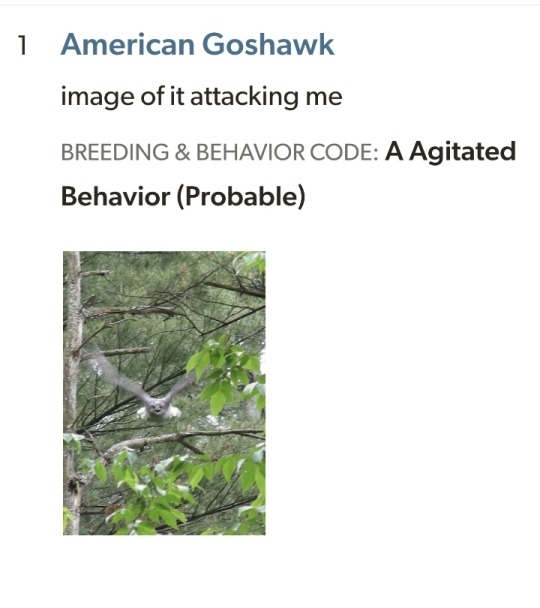20 | any pronouns | Lovecraft enthusiastMajoring in anthropology
Don't wanna be here? Send us removal request.
Text
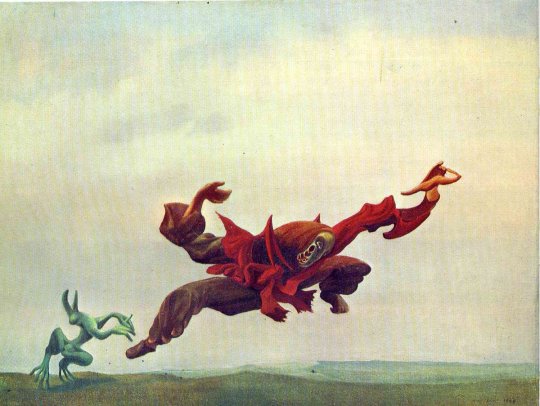

THE ANGEL OF HEARTH AND HOME (Max Ernst, 1937)
THE TRIUMPH OF SURREALISM (Max Ernst, 1937)
3K notes
·
View notes
Text
ok well this blew my mind
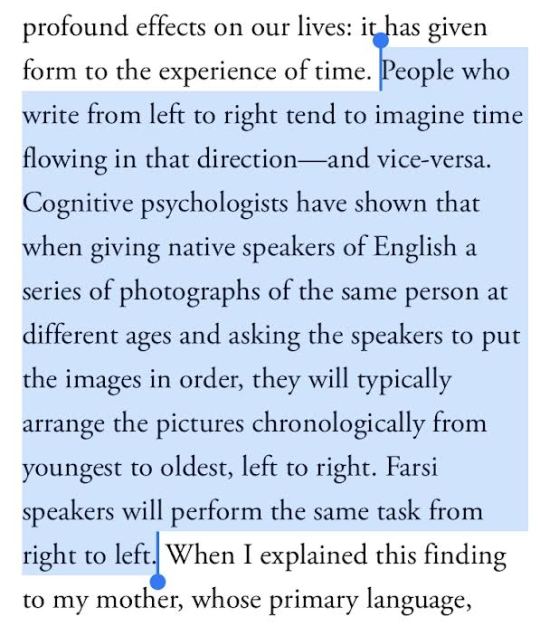
This is also true with filmmakers. Western filmmakers pan their cameras mostly left to right and Iranian filmmakers do right to left.
96K notes
·
View notes
Text
Notes for drawing (and writing) insects
I do something like this almost yearly and it feels like it gets a little longer every time!
Personally I draw either cartoony stuff or hybrid monsters where none of this is mandatory, but here are some of the things I sometimes see missing or inaccurate in insect artwork that was meant to be lifelike, and even if you only do alien, monster or cartoon arthropods, or you don’t make art at all, you might still like to know some of these things!
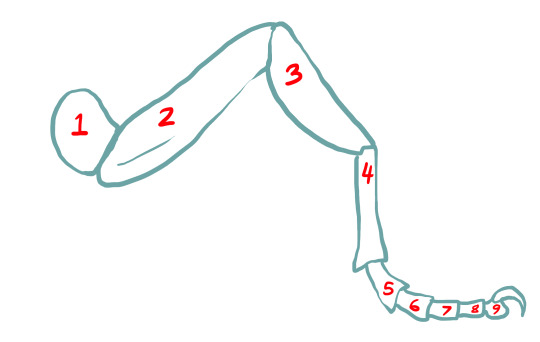
First off, an insect leg pretty much always has 9 segments. #1, the coxa, is what attaches it to the body and can be a short little “ball” or a whole long piece, but almost always bends DOWN. The last five segments are almost always very short, forming a super flexible “foot” or “tarsus” ending in a set of claws and sticky pads. All spiders have this “foot” as well!
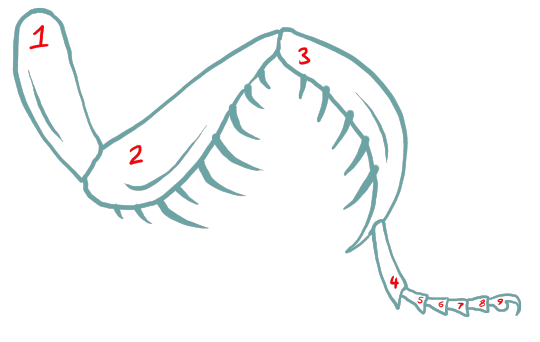
The foot is even still present on the claws of a preying mantis - growing right out of the “sickle” like this, and still used as feet when the mantis walks around or climbs. Basically ONLY CRABS have limbs ending in simple points!
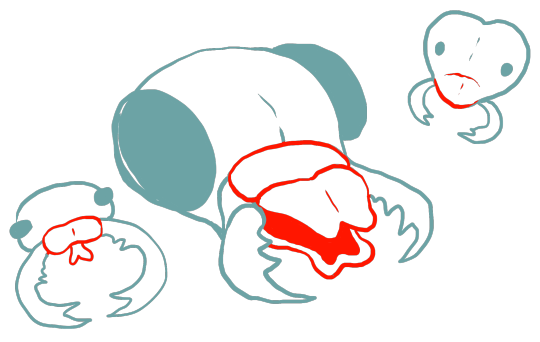
Insects don’t just have side-to-side mandibles at all, but an upper and lower set of “lips” like a duck bill! In some, however, these parts can be very small or even fused solid.
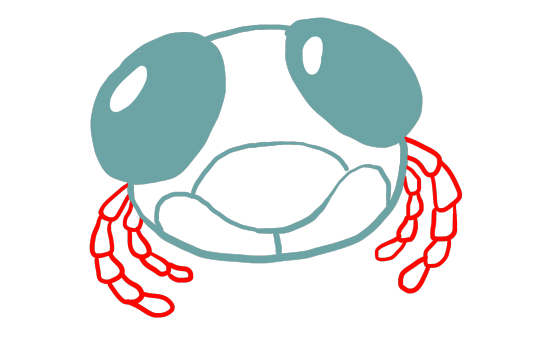
Insects also typically have four “palps” on their head, an upper and lower pair, which evolved from legs and are used to handle food!
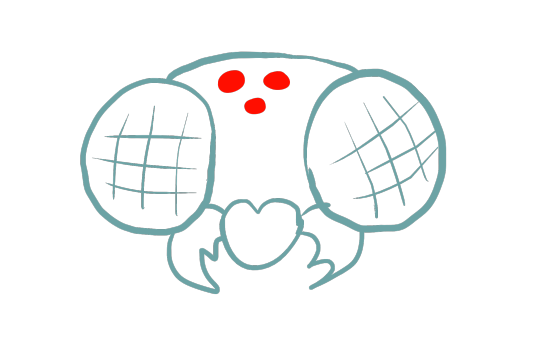
Most *FLYING* insects have ocelli, single-lens eyes in addition to their multi-faceted compound eyes! Some flightless insects can also have them but it depends on the species.
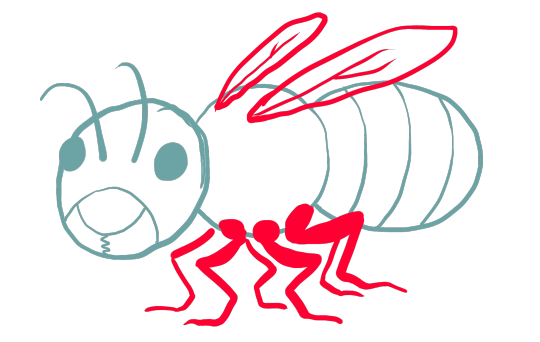
All legs and wings are always attached to the thorax!
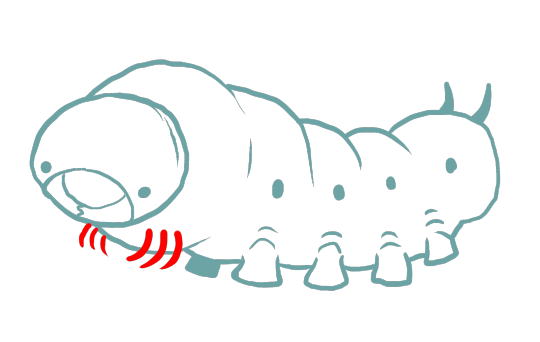
Caterpillars still have six legs! They’re very small and up near the head. All the other “legs” are actually just suckers on its underbelly.
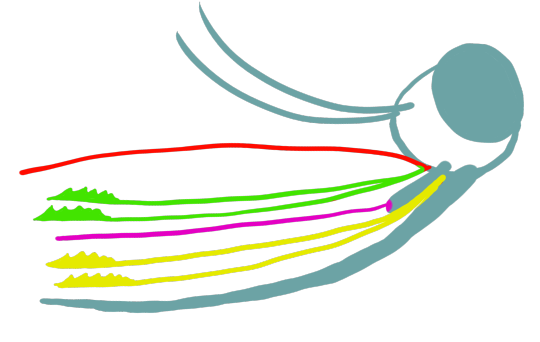
You will be forgiven for never drawing this but this is how many parts a mosquito’s mouth actually has. Every piece you can find in another insect’s mouth - the ��upper lip,” the mandibles, the palps, etc. - are all present as different needles and blades!
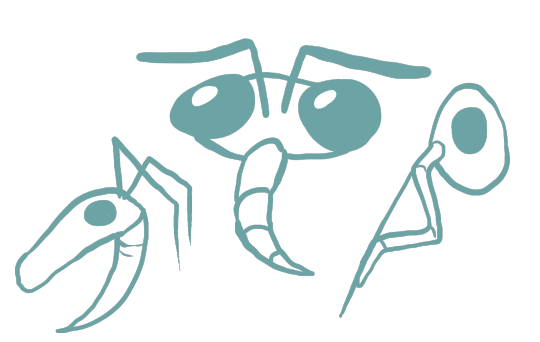
The word “bug” originally referred only to one group of insects, the hemiptera, including stink bugs, assassin bugs, aphids, cicadas, bed bugs and water striders to name a few. One distinguishing feature of this group is that it did away with all those separate mouth parts - all “bugs” have just a single, hollow “beak” or “proboscis” to feed through!

The vast majority of insect groups have wings or at least members with wings, and all insects with wings have FOUR of them…..except that in beetles, the front wings evolved into solid, protective shields for the hind wings, and in true flies (which includes mosquitoes!) the hind wings evolved into tiny little knobs with weights on the end, called halteres, which the fly’s fast-paced brain uses to feel its orientation, altitude, speed, surrounding air pressure and other fine data making them quite possibly the most advanced aerial navigators on the planet. OTHER NOTES THAT DON’T NEED ILLUSTRATION:
Insects and other arthropods HAVE TRUE BRAINS in their heads, made of brain cells like ours. They can learn, memorize, and make decisions.
Insects do have males and females and obviously only females lay eggs. Fiction is always getting this wrong, but I guess it also does so with birds so whatever.
Of insects, only termites, ants, some bees and some wasps have fully evolved a eusocial colony structure with “queens” as we think of them. Of these, the termites are actually highly specialized cockroaches, and the rest (bees, ants, wasps) are the same exact group.
The scrabbling, clicking noise associated with insects is usually added artificially in nature footage for dramatic effect. While their movements likely emit some sort of sound, it’s probably no “louder” proportionately than, say, the sound of a cat’s fur as it walks. In other words it should not be noticeable; what kind of animal survives as a species if it clatters with every step??
Compound eyes do not see a bunch of identical little images. There is no advantage to any organism seeing that way. An insect sees one big picture just like you do.
Only some insect groups have “larvae.” Others have “nymphs” which resemble fully grown but wingless insects.
The only insects with a venomous bite are some true bugs and some flies. There are no beetles or roaches or wasps or anything else that inject offensive toxins through their mouth parts, as far as I know!
The only insects that lay eggs inside other insects parasitically are certain wasps and flies. There are also NO arachnids that do this.
Only certain bees, wasps and ants have stingers on their abdomens. These are modified from egg laying appendages, so it’s also only ever the females.
The only other kind of “sting” in any insect is a venomous hair or spine, mostly seen in caterpillars.
17K notes
·
View notes
Text
Alright, so a lot of characters are pretty good parallels for Taylor, some even to the extent that they’re acknowledged as such by the text. Basically every group leader gets this treatment: Satyr is noted to share Skitter’s creativity in power usage as well as her murky place in the hero-villain dichotomy. The similarity between Taylor and Jack Slash becomes an important plot point when it prompts Golem to realize Jack’s secondary power, letting him turn the tide of the fight. Weld commiserates with Taylor on the oil rig about not being able to turn away from the fight. And Teacher shares a place with Khepri in the highly specific “mind controller whose specific abilities give them the capacity to become exponentially dangerous” category.
But you know who she isn’t deliberately compared to as often? Trickster. Which is kind of weird, as Francis Krouse is startlingly similar to Taylor in a lot of ways, and their points of divergence are really useful for identifying what Wildbow is doing with these characters.
Keep reading
503 notes
·
View notes
Note
What are some of the crunchiest games you've ever played?
My childhood favorite/ongoing adulthood obsession Rolemaster is bar none the crunchiest game I've ever played. It's also a very silly game and a lot of the crunch is in very misguided places, but it does grant the game a unique vibe. Here's a table.

Burning Wheel is a very different kind of crunchy game but it still has a lot of bite to it. I remain fascinated by Burning Wheel and would actually love to play it some day, but it really is a game that benefits from a group where everyone knows what they're doing. The few times I've tried running it while trying to keep everything in my head while also teaching other people how to play it has been very mentally taxing, and I feel I haven't really gotten the most out of the system.
I think D&D 3e and 4e are both crunchy in their own ways, 3e especially, and I spent a very large part of my childhood playing 3e. I actually have much less actual play experience of 4e in spite of the fact that every time I've played 4e it's been a blast, which is a shame.
Anyway, there is one particular crunchy RPG I would really like to try, and I think it's pretty much the holy grail of crunchy RPGs: Hero. I actually own Champions 4e (the superhero RPG that uses the Hero system but also acts as the core rulebook for Hero 4e) and while it is extremely crunchy (it's a game that takes into account velocity while doing a charging attack, meaning that superspeed has an offensive utility, attacks can knock enemies into walls, etc.) the base mechanics are actually pretty straightforward? One of my dream campaigns is basically to run Fantasy Hero in such a way that the power creation system is basically reflavored into a spell research system. That would rule.
52 notes
·
View notes
Text
https://english.radio.cz/beavers-build-planned-dams-protected-landscape-area-while-local-officials-still-8841536

A beaver colony in the Brdy region has gained overnight fame by building several dams in the Brdy protected landscape area, creating a natural wetland exactly where it was needed. It saved the local authorities 30 million crowns, and has the public cracking jokes about public administration and red tape.
The administration of the Brdy protected landscape area, which had gained approval for the 30 million crown project, was dealing with red tape and seeking the respective building permits from the Vltava River Basin authorities when the dam project was completed almost overnight by a local colony of beavers.
They could not have chosen their location better –erecting the dams on a bypass gully that was built by soldiers in the former military base years ago, so as to drain the area. The revitalization project drafted by environmentalists was supposed to remedy this. Bohumil Fišer, head of the Brdy Protected Landscape Area Administration says Nature took its course and the beavers created the necessary biotope conditions practically overnight.
23K notes
·
View notes
Text
stop using chatgpt!!!! take a bronze pin and carve your questions onto an ox scapula, then toss it into the fire!!!! use the cracks to divine the gods answer!!!!
70K notes
·
View notes
Text
Adobe is going to spy on your projects. This is insane.


146K notes
·
View notes
Text
338 notes
·
View notes
Text
Herbert West—Reanimator




By H. P. Lovecraft
44 notes
·
View notes
Text
I saw an otter briefly hop on top of a babirusa at the zoo and when the stranger standing next to me heard my camera shutter click he turned to me with this look of immense relief, put his hand to his chest, and said in a dead serious tone “oh thank christ someone caught that on film”
97K notes
·
View notes
Photo

HELICOPRION OVER THE DECADES
full video here
One of the many animals featued on my latest video about how our perception of Dinosaurs and other prehistoric animals changed over the decades, as more discoveries were made. This piece is also available for prints and more at redbbuble
Youtube channel
Instagram
Prints and more paleomerch
385 notes
·
View notes
Text
If you see this you’re legally obligated to reblog and tag with the book you’re currently reading
320K notes
·
View notes
Text
DOG SAINT MONDAY



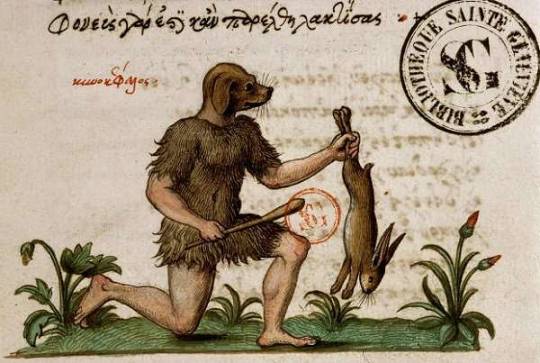
It's time for another
DOG SAINT MONDAY
28K notes
·
View notes
